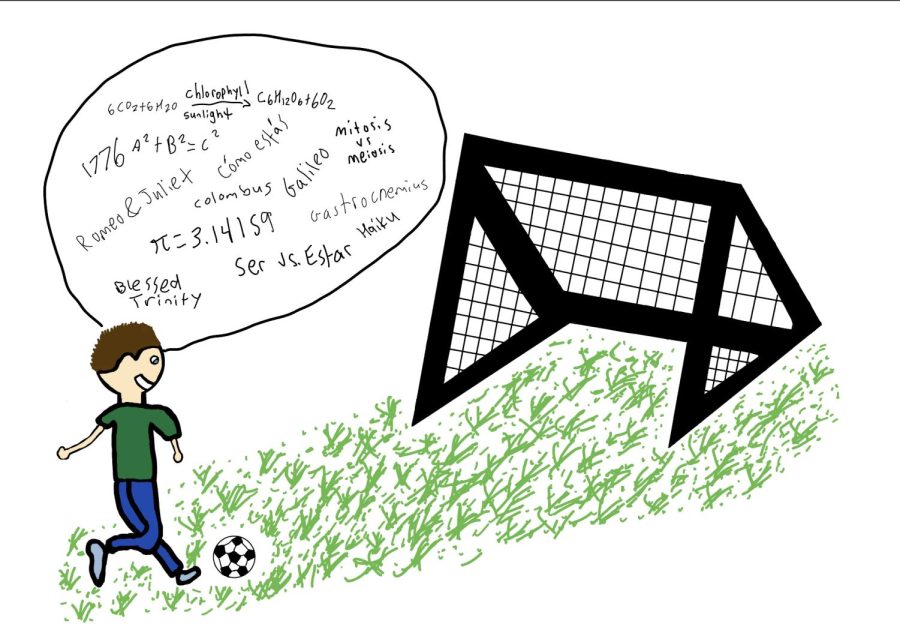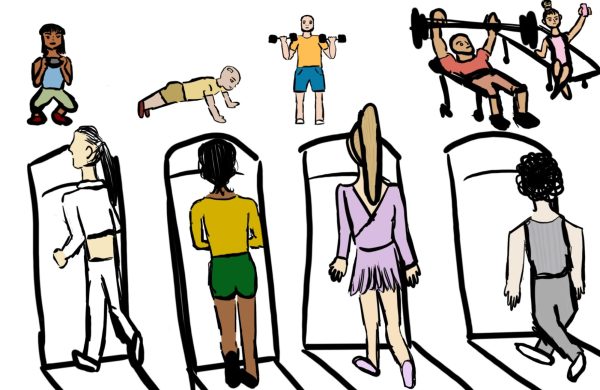Student-athletes balance double threat
High school athletics are widely renowned for the beneficial challenges, team bonding, and memory building experience they provide. Despite all of the positives athletics offer, they are an unsung bane of a greater aspect of high school: academics. Balancing a heavy, college-preparatory based course load while attempting to contend in a competitive athletic conference requires utmost time management, discipline, and dedication in order to see positive results on the field and in the classroom.
Br. Peter Lamick ’07, a faith teacher and football coach, said, “The stress of student-athletes predominantly stems from parental and personal expectations to always be successful.”
For many student-athletes, worrying about meeting these expectations can cause stress and anxiety that can lead to reduced work efficiency or decreased confidence.
“Getting homework done to the best of my ability and on time is the biggest difficulty I face when I am in season,” said freshman Kayli Burke. “Ending practice late and having to complete homework afterwards definitely poses a challenge for all athletes.”
For some students, study halls and flex time serve as opportunities to negate their homework load that would normally have to be completed after a sports practice.
“I manage my homework load by completing a large majority of my homework during my study halls or right before practice,” said junior Jack Raclaw. “It helps me avoid having to take 2-3 hours of homework home to complete [after practice].”
Similarly, using in class time efficiently can help nullify the amount of time athletes spend on work outside of school.
“Beyond using class time efficiently…having a routine works well to create a manageable plan to help fulfill both academic and athletic responsibilities,” said Br. Lamick.
Some students promoted their own routine of completing homework the day it was assigned, a concept unique to a block schedule that has two days in between assigned dates and due dates.
“I try to do my homework as soon as I can,” said freshman David Hosnedl. “It allows me to ensure I am ahead of my game in case…[I] have a particularly difficult practice or unusually large homework amount.”
The difficulty student-athletes face does not go unnoticed by faculty and administrators. With longer periods of 85 minutes in each block, teachers can use time to allow for in class work or large chunks of work time for students to complete what would be homework.
“ I… have the time to introduce a task, for students to fully engage the task, and to…[allow] students [to] have more time to ask questions,” said Br. Lamick. “This enables me to frequently have students complete work in class…as opposed to assigning homework.”
The path that student-athletes take is one filled with challenges and lined with trials. Being able to perform in accordance with expectations set in both athletics and academics provides a host of unique challenges, but the benefits that come with it allow students to expand their mindset, build character, and create friendships for life.
Your donation will support the student journalists of Saint Viator High School. Your contribution will allow us to purchase equipment and cover our annual website hosting costs.





